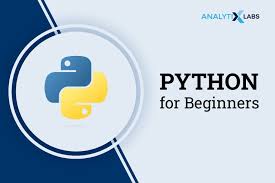Python has become one of the most sought-after programming languages, particularly in the field of data science. Its simplicity, extensive libraries, and robust community support make it an ideal choice for both beginners and experienced professionals. Whether you’re just starting out or looking to refine your skills, this guide will take you through the essential aspects of mastering Python for data science.
Why Choose Python for Data Science?
Python stands out due to its versatility and ease of use. Unlike other programming languages, Python offers a clear and readable syntax, making it accessible even to those with no prior coding experience. Furthermore, Python boasts a rich ecosystem of libraries specifically designed for data science, such as NumPy, pandas, Matplotlib, and Scikit-learn. These tools simplify complex tasks like data manipulation, visualization, and machine learning, making Python an indispensable asset for data scientists.
Another major advantage of Python is its strong community support. With thousands of developers contributing to open-source projects, there is an abundance of resources available, including documentation, tutorials, and forums. This support makes troubleshooting and learning significantly easier, ensuring that Python remains a top choice for data-driven professionals.
Setting Up Your Python Environment
Before diving into data science with Python, it’s essential to set up your development environment properly. The easiest way to get started is by installing Anaconda, a distribution that comes pre-loaded with essential data science libraries. Anaconda provides a user-friendly interface and includes Jupyter Notebook, an interactive tool that allows you to write and execute Python code efficiently.
For those who prefer a more customized setup, installing Python from the official website and managing packages using pip is another viable option. Popular IDEs like PyCharm, Visual Studio Code, and Jupyter Notebook enhance productivity by offering features such as code completion, debugging, and easy visualization.
Essential Python Libraries for Data Science
Several Python libraries are fundamental to data science. Here’s a breakdown of the most important ones:
NumPy: This library provides support for large multidimensional arrays and matrices, along with a collection of mathematical functions to operate on these data structures efficiently.
pandas: Used for data manipulation and analysis, pandas makes handling structured data simple and intuitive, with its powerful DataFrame and Series objects.
Matplotlib & Seaborn: These libraries allow for effective data visualization, enabling users to generate a wide range of graphs and plots to understand data trends better.
Scikit-learn: This is the go-to library for machine learning in Python, offering tools for classification, regression, clustering, and dimensionality reduction.
TensorFlow & PyTorch: These libraries provide deep learning capabilities, making them ideal for advanced artificial intelligence applications.
Data Preprocessing in Python
Before analyzing or modeling data, preprocessing is crucial. Python offers powerful tools to clean and transform data effectively. Common steps in data preprocessing include:
Handling Missing Values: Libraries like pandas provide functions to fill or remove missing data efficiently.
Data Transformation: Standardization and normalization techniques help to scale data appropriately for machine learning models.
Feature Engineering: Creating new features from existing data can enhance predictive accuracy and model performance.
Using Python, these steps can be automated, ensuring consistency and efficiency in handling large datasets.
Exploratory Data Analysis (EDA) with Python

Exploratory Data Analysis (EDA) helps in understanding the data before applying machine learning algorithms. Python provides robust libraries to perform EDA effectively:
Summary Statistics: Using pandas, you can compute mean, median, standard deviation, and more.
Visualization Techniques: Matplotlib and Seaborn enable data scientists to create histograms, scatter plots, and box plots to identify patterns and anomalies.
Correlation Analysis: Understanding relationships between different variables helps in feature selection and model development.
EDA is a critical step that allows data scientists to gain insights and make informed decisions about data modeling strategies.
Machine Learning with Python
Machine learning is at the core of data science, and Python provides excellent tools for building predictive models. Here’s how to get started:
Supervised Learning: Includes classification and regression tasks. Algorithms like decision trees, random forests, and support vector machines are readily available in Scikit-learn.
Unsupervised Learning: Focuses on clustering and association techniques. K-means clustering and principal component analysis (PCA) are commonly used in Python.
Deep Learning: Advanced applications involve neural networks, which can be implemented using TensorFlow or PyTorch.
Python’s flexibility allows data scientists to experiment with various algorithms and fine-tune models for optimal performance.
Deploying Machine Learning Models
After building and training a machine learning model, deployment is the next step. Python simplifies model deployment with frameworks like Flask and FastAPI, enabling developers to create APIs that serve predictions in real-time. Additionally, cloud services such as AWS, Google Cloud, and Azure offer seamless integration with Python-based models, making it easier to scale applications.
Model deployment ensures that insights derived from data science projects can be practically applied in real-world scenarios, adding value to businesses and industries.
Python for Big Data and AI
With the rise of big data, Python has proven to be an efficient tool for handling massive datasets. Technologies like Apache Spark and Dask allow data scientists to process large volumes of data efficiently. Additionally, Python’s role in artificial intelligence (AI) continues to expand, with advancements in natural language processing (NLP), computer vision, and autonomous systems.
From chatbots to self-driving cars, Python is at the forefront of AI innovations, making it a valuable skill for aspiring data scientists.
Conclusion
Mastering Python for data science opens doors to endless possibilities. Whether you are analyzing data, building machine learning models, or deploying AI applications, Python provides the necessary tools to excel. By leveraging Python’s rich ecosystem and continuously honing your skills, you can stay ahead in the ever-evolving field of data science.
With the growing demand for data-driven insights, now is the perfect time to invest in learning Python. Start coding, explore real-world datasets, and take your data science journey to the next level!


